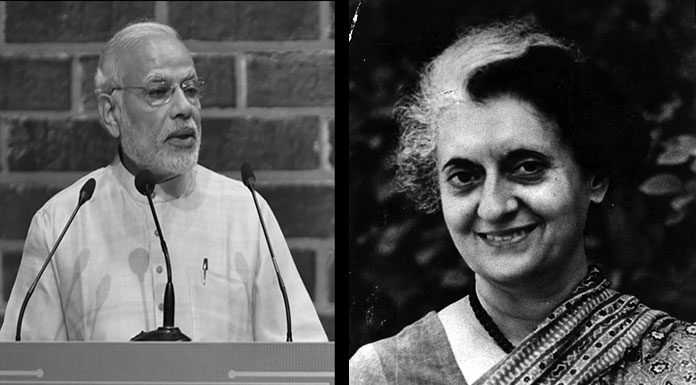Today, it has become easy for us to get the government services like passport, ration card or birth certificate. But this has come after a long struggle and thanks to the intervention of technology in the government – this is popularly known as e-governance.
e-Governance is nothing but the distribution of government services and information to the public using electronic means. This was done for improving the efficiency of government departments and hassle-free interaction of citizen with the government.
e-Governance is not new to India. The first formidable attempt of using technology in the government was attempted in 1970 during the time of Prime Minister Indira Gandhi. Getting the sense of increasing importance of technology, in those days popular as ‘electronics', she set up the Department of Electronics in 1970. Subsequently, in 1976, the National Informatics Centre (NIC) was formed. This was the first major step towards e-governance in the country as it brought ‘information' and ‘communication' in focus.
The second tangible thrust on e-governance came from Prime Minister Rajiv Gandhi in 1987 in the form of establishment of NICNET, a national satellite-based computer network. This was followed by the launch of the District Information System of the National Informatics Centre (DISNIC) programme to computerize all district offices in the country for which free hardware and software were offered to the state governments. NICNET was extended via the state capitals to all district headquarters by 1990.
Since then there was a long pause as nothing sexy happened until 2006. But this long pause was followed by one of the biggest push to e-governance in India. Prime Minister Manmohan Singh launched National e-Governance Plan (NeGP) in 2006, of which, much of the pain-points were cleared by Prime Minister Atal Bihari Vajpayee before he demitted office in 2004.
The NeGP took a holistic view of e-governance initiatives across the country. A massive countrywide IT infrastructure was put in place with the aim to bring public services closer to people. Under this scheme, the government approved 27 Mission Mode Projects (MMPs) and 8 components. Later on, in 2011, 4 more projects – health, education, PDS, and posts were added to make it to 31 MMPs.
From 2006 to 2014, a greater vision of e-governance in India was set in place. Not all, but a large number of MMPs were running successfully. In fact, MMPs like Passport Seva Project completely changed the way one used to imagine government services in the country. But this period also saw some of the lesser talk disasters like buying costly hardware from private companies which immediately become obsolete turning into an e-waste. The NIC established data centres across the country but not all were used.
However, the overall learning had made e-governance culture in the country more matured. State after state has moved beyond NIC for e-governance projects. Now, most of them are building their own IT Cadre. MAPIT in Madhya Pradesh, CHiPs in Chhattisgarh, JAPIT in Jharkhand, Webel in Bengal are few examples of state IT teams.
And, then came May 2014, the beginning of the Modi era. A charismatic Chief Minister who had enough experience of governance and use of technology in government. As a CM of Gujarat, he had successfully imbibed some of the central government MMPs and launched distinctive state level e-governance projects like e-Dhara which digitized all land records and won many e-governance awards.
As a Prime Minister, those sharpness are yet to be seen in New Delhi. Other than bringing different goals and government IT-related programmes under one umbrella of Digital India, giving it a marketing boost, nothing substantial seems to have happened. The major thrust of MeitY and its integral e-governance arm NIC seem to be dedicated to projecting Prime Minister work and his digital image.
Having said that some unbelievable things have been achieved in the last four year. First, the known one is the democratization of the payment system in India. With the right kind of policy, the establishment of organizations like Unified Payments Interface (UPI) and National Payments Corporation of India (NPCI) and believing in Aadhaar project, the Prime Minister Narendra Modi government has completely overhauled the debate around access to the banking system in the country.
Second, the unknown or one of the less mentioned achievements of Modi government is the scrutiny of the government funds given for e-governance projects. According to various state e-governance heads including the non-BJP states, the audit of the funds utilization has improved like never before. And, this has lead to a significant improvement in the outcome.
Third, the Prime Minister has evaluated UPA era information technology projects based on the merit and that is why programmes like GeM and technology-driven GST have seen the lights of the day. And, yes, for Aadhaar he is biting the bullet like no one has.











